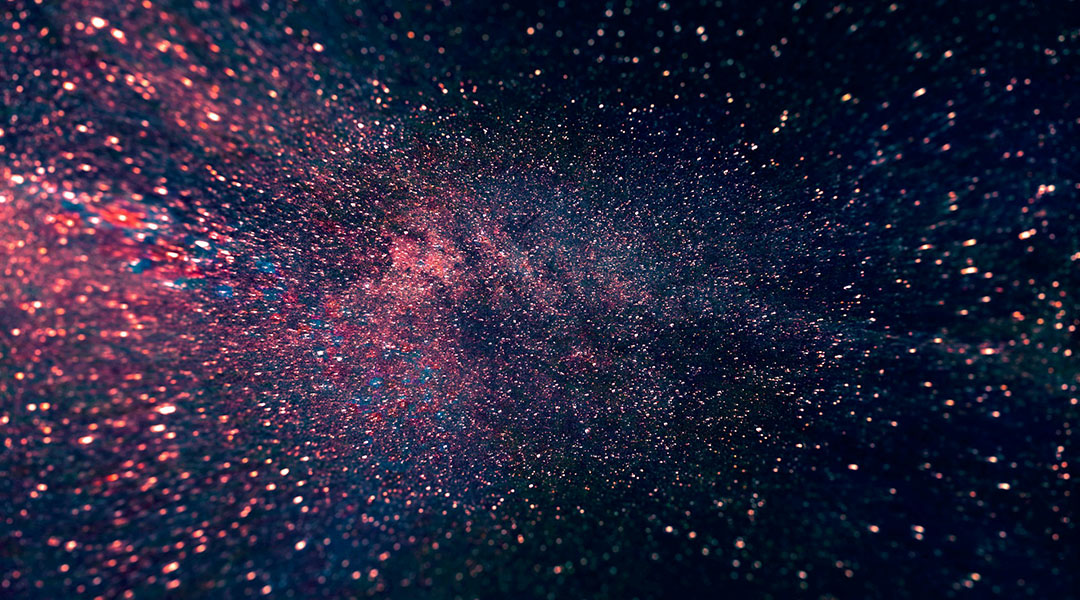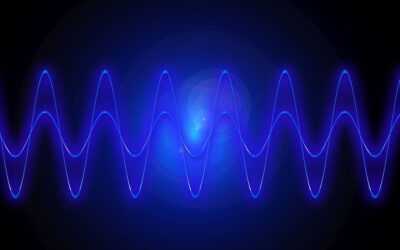The accelerating expansion of the Universe might not be just an unexplained phenomenon — according to a new proposal by theoretical physicists, it could be a fundamental feature woven into the very fabric of reality.
The researchers suggest that space is not an empty vacuum but that instead our whole Universe is a complex quantum object called the Glauber-Sudarshan state, where countless interacting strings are constantly born and disappear. This hypothesis breathes new life into string theory, which has long aimed to unify all the fundamental forces of nature.
Unlike traditional quantum field theory, which treats elementary particles as point-like objects, string theory envisions them as tiny vibrating strings and offers a unified framework for gravitational, strong, weak, and electromagnetic forces.
However, despite its success in describing particle interactions, string theory has struggled to account for the accelerating expansion of the Universe — an established observational fact that contradicts its mathematical predictions about the properties of empty space.
“To get an accelerated expansion of the Universe, we need some net positive energy,” Keshav Dasgupta, a professor of physics at McGill University and one of the authors of the study, said in an email. “This positive energy, also known as dark energy (and sometimes called the cosmological constant), drives the accelerated expansion of our Universe.”
“However, it turns out that string theory fails to provide such a positive energy vacuum as a solution to its equations,” he continued. “In fact, a careful analysis shows that a vacuum solution can only have a net zero or negative energy but never a positive energy.”
A superposition of universes
In their study published in Progress of Physics, the team suggests a solution to this problem by postulating that our Universe is not in the state of lowest possible energy — what physicists call a vacuum — but is instead a quantum superposition of infinite universes with varying energies. This superposition, known as the Glauber-Sudarshan state, arises from the wild fluctuations of particles and fields that are continuously created and destroyed, as predicted by string theory.
“Glauber-Sudarshan state is an excited state in string theory,” said Dasgupta. “For example, if we view the surface of a pond to be the vacuum, then the excited state would be like boiling the water of the pond. Due to it being an excited state it automatically has some positive energy inside it.
“However this positive energy is not enough to account for the so-called dark energy because due to a strange property of gravity, any solution coming from Einstein’s theory unfortunately has some negative energy already built in it.”
Despite these challenges, the study’s detailed analysis of string theory’s complex equations reveals that the Glauber-Sudarshan state collects and accumulates energies from various quantum effects in a structured way.
Eventually, these accumulated energies combine to produce a net positive energy, albeit a very small one. This outcome aligns with observations that the cosmological constant is incredibly tiny — about 120 orders of magnitude smaller than earlier theoretical estimates.
Future observatories will help provide proof
While the complexity of string theory limits researchers from exploring all the fine details of their solution, the team believes that future astronomical observations will help clarify their model.
“There has been a recent observation that the cosmological constant or the dark energy may not be a constant after all,” said Dasgupta. “It might have some small time dependence. This is the DESI-BAO experiment, and we are still waiting for more results from them to see whether this is really the case.
“Interestingly, our construction of the Glauber-Sudarshan state allows such a time-dependent dark energy scenario. Question is how robust is the DESI-BAO result and, if this is confirmed, then we might be able to explain such an effect.”
While observational data with the required accuracy is not yet available, the scientists say they are not going to stop their search and that they plan to conduct an even deeper theoretical analysis of the universe as a Glauber-Sudarshan state in string theory.
“One of our aims is to reproduce the results of particle physics in an accelerating background,” Dasgupta concluded. “We have a proposal for an accelerating phase, but it is important to study its detailed dynamics, in order to show that it is viable, and that it can make predictions for cosmological observables including its ability to confront with upcoming data from DESI, Euclid, and 21-cm experiments.”
“From a purely theoretical point of view, we believe it is for the first time an accelerating solution is predicted from string theory. Elucidating the mathematical properties of such a solution will be a new direction of research.”
Reference: Stephon Alexander et al, de Sitter State in Heterotic String Theory, Progress of Physics (2024). DOI: 10.1002/prop.202400163
Feature image credit: Billy Huynh on Unsplash

















